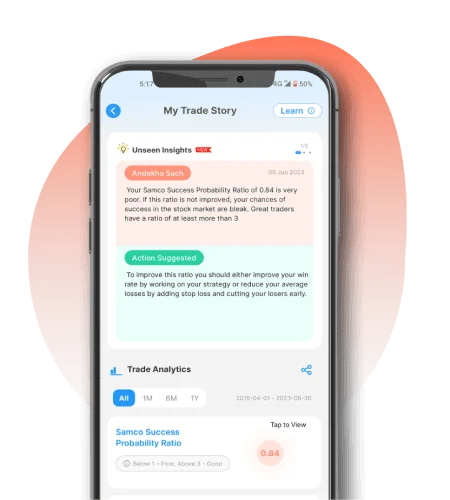Understanding Derivatives: A Simple Guide to a Complex Market Instrument
In the world of finance, derivatives are like mirrors—they don’t have a value of their own but reflect the value of something else. Simply put, a derivative is a financial contract whose value is based on an underlying asset such as a stock, commodity, currency, or even an interest rate.
Derivatives play a critical role in today’s financial markets by helping investors manage risk, discover prices, and improve market efficiency. Though they may sound intimidating at first, understanding how they work can empower you to make more informed decisions in your trading or investing journey.
By the end of this article, you’ll understand the key types of derivatives, how each one functions, their practical uses, and why they’re such an integral part of modern financial markets—especially in India.
What is a Derivative?
A derivative is a contract between two or more parties whose value is derived from the price of an underlying asset. These underlying assets can include stocks (e.g., Reliance Industries), commodities (e.g., gold), currencies (e.g., USD/INR), or even interest rates.
Think of it like a movie ticket that gets its worth from the movie it allows you to watch. The ticket’s value depends on how good or popular the movie is—just like a derivative depends on the underlying asset’s value.
Derivatives are primarily used for two purposes:
- Hedging: To protect against adverse price movements (like an insurance policy).
- Speculation: To profit from expected changes in price.
Why are Derivatives Important?
Derivatives are crucial tools in the financial ecosystem, offering benefits far beyond just profit-making. Here's why:
a) Risk Management (Hedging)
Imagine a farmer growing wheat. He’s worried that wheat prices may fall by the time he harvests. To protect himself, he enters a futures contract to sell wheat at a fixed price. If the market price drops later, the contract shields him from losses. This is hedging—using derivatives to reduce risk.
b) Speculation
Now think of an investor who believes gold prices will rise in the next 3 months. Instead of buying physical gold, they buy a gold futures contract. If prices rise, they make a profit—this is speculation, or betting on price movements.
c) Price Discovery & Market Efficiency
Since derivatives reflect real-time market expectations, they help in discovering prices and make markets more efficient.
Key Benefits of Derivatives:
- Hedge against price fluctuations
- Speculative opportunities
- Better price discovery
- Enhance liquidity
- Portfolio diversification
These instruments influence not just individual trades but also broader economic and institutional decisions, making them vital in today’s interconnected financial world.
Types of Derivatives
Derivatives can be broadly classified into four main types:
a. Forwards
Definition: A forward contract is a customized agreement between two parties to buy or sell an asset at a specific price on a future date.
How it Works: Since forwards are not traded on exchanges, they are Over-the-Counter (OTC) contracts—tailored to the parties' needs.
Example: Suppose an Indian IT company is expecting $1 million from a US client in 3 months. It signs a currency forward contract with a bank to lock the exchange rate today, protecting against INR-USD fluctuations.
Use Cases:
- Exporters/importers hedging currency risk
- Farmers locking in commodity prices
Analogy: Think of it as pre-ordering an item at today’s price, to be delivered in the future—regardless of future price changes.
b. Futures
Definition: A futures contract is a standardized agreement to buy/sell an asset at a future date, traded on an exchange.
How it Works: These are exchange-traded (NSE/BSE in India) and require daily mark-to-market settlement and margin deposits.
Example: You expect the Nifty 50 to rise, so you buy a Nifty Futures contract. If the index moves up, you profit. If not, you face a loss.
Use Cases:
- Hedging portfolio exposure
- Trading market views with leverage
Indian Market Relevance: Futures are among the most actively traded derivatives on Indian exchanges, especially on indices and top stocks.
Analogy: It’s like booking a hotel room months in advance at a fixed price—you win if prices go up later.
c. Options
Definition: An option gives the buyer the right, but not the obligation, to buy (Call) or sell (Put) an asset at a pre-agreed price before a certain date.
Premium Concept: You pay a small fee (called premium) to enter this contract.
Real-life Analogy: Think of paying ₹500 to get the right to buy an iPhone at ₹70,000 within 1 month. If the price goes to ₹80,000, you exercise your right. If it stays at ₹70,000 or drops, you walk away—only losing the ₹500 premium.
Example: Buying a Reliance 2800 Call Option (CE) gives you the right to buy Reliance shares at ₹2800 by expiry.
Use Cases:
- Speculating with limited risk
- Protecting downside (hedging)
- Income generation (selling options)
Indian Market Relevance: Futures are among the most actively traded derivatives on Indian exchanges, especially on indices and top stocks.
Analogy: It’s like booking a hotel room months in advance at a fixed price—you win if prices go up later.
d. Swaps
Definition: A swap is a contract in which two parties exchange cash flows or financial instruments.
How it Works: Most common are interest rate swaps and currency swaps, typically used by large corporations or banks.
Example: Company A has a loan with a fixed interest rate, but it wants to benefit from falling rates. Company B has a floating rate loan but wants stability. They swap interest payments—helping both manage their liabilities better.
Use Cases:
- Managing interest rate exposure
- Currency risk for international companies
Simplified Analogy: Two people swapping lunch boxes because each prefers the other’s meal—benefiting both.
Comparison Table: Forwards vs Futures vs Options vs Swaps
| Feature | Forwards | Futures | Options | Swaps |
|---|---|---|---|---|
| Market Type | OTC | Exchange | Exchange | OTC |
| Customization | High | Low | Moderate | High |
| Settlement | At maturity | Daily MTM | On exercise | Periodic (as agreed) |
| Risk | High | Medium | Limited to premium | High |
| Common Use Case | Hedging | Speculation | Hedging/Speculation | Risk management |
Risks Involved in Derivatives
While derivatives offer powerful tools, they also come with significant risks:
- Leverage Risk: Small market moves can result in large gains—or losses—due to borrowed capital.
- Counterparty Risk: In OTC contracts like forwards/swaps, the other party may default.
- Market Volatility: Price swings can cause margin calls and heavy losses.
Derivatives Market in India
India’s derivatives market began in 2000 with index futures and has since grown to become one of the largest globally by volume.
Key players:
- Exchanges: NSE and BSE
- Regulator: SEBI (ensures transparency and investor protection)
Popular contracts include:
- Index futures & options (Nifty, Bank Nifty)
- Stock derivatives (Reliance, TCS, HDFC Bank)
- Currency and commodity derivatives
India has witnessed growing retail participation, making it critical to educate and inform investors about responsible derivatives trading.
Conclusion
Understanding derivatives is crucial for anyone looking to navigate today’s dynamic financial markets. Whether for hedging, speculation, or portfolio diversification, derivatives offer powerful possibilities—but require informed use.








 Easy & quick
Easy & quick